What is a Pipe Camera Assessment?
The pipe camera assessment is designed to provide the inspector with additional information regarding portions of the plumbing system which are not visible during the standard inspection process. To accomplish this, a high resolution camera attached to a 100' push rod is inserted into the drain system (typically at a clean out - access point to plumbing drain pipe). Portions of the drain/sewage piping are viewed using the pipe scoping camera to determine if detectible indicators of pipe issues, damage, or functionality failures are present.
What Does the Inspector Look For?
During a pipe camera assessment, the basic items and indicators that the inspector is looking for includes, but is not limited to:
-Type of pipe material
-The presence of problematic or dated material
-Indicators of tree root entry
-Indicators of pipe separation
-Indicators of pipe 'fall' or slope issues
-Indicators of pipe 'bellies' or 'channeling' (low spots/deterioration of pipes)
-Indicators of blockage/foreign objects in pipes
-Indicators of improper pipe connections
Do All Buildings Need a Pipe Camera Assessment?
The short answer is no. We do not recommend a PCA for new construction or any home which remains under a builder/contractor warranty. Additionally, if the home is scheduled for static testing or specific inspections by plumbing specialists, a PCA is not recommended. Although pipe issues may be present at any property, some site specific factors will increase the likelihood of issues at buried plumbing. These factors include, but are not limited to:
-Systems surpassing 20 years in age
-Structures containing dated or problematic plumbing material
-Large trees/root systems near structure/buried plumbing material
-Structures having undergone foundation settlement and/or repair
-Structures in areas of known expansive soils and elevated ground swell
-Structures having undergone significant structural alteration/additions
-Structures having undergone unprofessional or unpermitted updates/repairs
-Structure with current plumbing issues and/or known previous issues
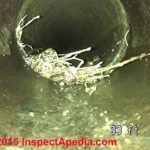
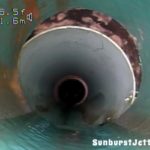
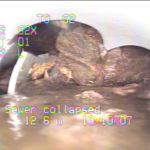
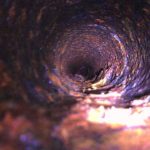
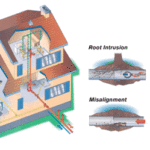
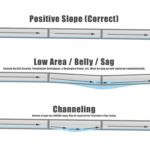
PIPE CAMERA ASSESSMENT LIMITATIONS:
The limited plumbing camera assessment is not designed or intended to diagnose specific issues, isolate exact locations of areas of concern, or determine the degree/significance of damage (if discovered). Rather, this limited assessment is intended to provide additional, basic information in regards to plumbing material and signs of possible functionality issues or material damage. All noted information and concerns should be assessed, verified, and remedied as needed by a licensed plumbing professional. Multiple limitations to the camera assessment are present and additional issues may go undiscovered during the limited assessment.
Multiple assessment limitations reduced the ability to fully investigate the system and additional issues/concerns, both minor and significant, may be present. The camera assessment process is not designed to be intrusive, destructive, or all encompassing. Rather, the plumbing camera assessment is intended to provide additional, basic information in regards to the buried drain line material determine is obvious, physical damage is present at the areas viewed through the camera. No work or information which requires specific licensing outside of those held by the operating inspector has been, or will be performed. This 3rd party assessment and report has been provided to the client and representing agents for the purposes of due diligence, filing of available information, and additional client protection. The assessment process and report do not, in any manner, represent a guarantee of warranty of the above mentioned property or associated system conditions. For a full analysis of the plumbing system, please call a licensed plumbing specialist.
What is a Pipe Camera Assessment?
The pipe camera assessment is designed to provide the inspector with additional information regarding portions of the plumbing system which are not visible during the standard inspection process. To accomplish this, a high resolution camera attached to a 100' push rod is inserted into the drain system (typically at a clean out - access point to plumbing drain pipe). Portions of the drain/sewage piping are viewed using the pipe scoping camera to determine if detectible indicators of pipe issues, damage, or functionality failures are present.
What Does the Inspector Look For?
During a pipe camera assessment, the basic items and indicators that the inspector is looking for includes, but is not limited to:
-Type of pipe material
-The presence of problematic or dated material
-Indicators of tree root entry
-Indicators of pipe separation
-Indicators of pipe 'fall' or slope issues
-Indicators of pipe 'bellies' or 'channeling' (low spots/deterioration of pipes)
-Indicators of blockage/foreign objects in pipes
-Indicators of improper pipe connections
Do All Buildings Need a Pipe Camera Assessment?
The short answer is no. We do not recommend a PCA for new construction or any home which remains under a builder/contractor warranty. Additionally, if the home is scheduled for static testing or specific inspections by plumbing specialists, a PCA is not recommended. Although pipe issues may be present at any property, some site specific factors will increase the likelihood of issues at buried plumbing. These factors include, but are not limited to:
-Systems surpassing 20 years in age
-Structures containing dated or problematic plumbing material
-Large trees/root systems near structure/buried plumbing material
-Structures having undergone foundation settlement and/or repair
-Structures in areas of known expansive soils and elevated ground swell
-Structures having undergone significant structural alteration/additions
-Structures having undergone unprofessional or unpermitted updates/repairs
-Structure with current plumbing issues and/or known previous issues






PIPE CAMERA ASSESSMENT LIMITATIONS:
The limited plumbing camera assessment is not designed or intended to diagnose specific issues, isolate exact locations of areas of concern, or determine the degree/significance of damage (if discovered). Rather, this limited assessment is intended to provide additional, basic information in regards to plumbing material and signs of possible functionality issues or material damage. All noted information and concerns should be assessed, verified, and remedied as needed by a licensed plumbing professional. Multiple limitations to the camera assessment are present and additional issues may go undiscovered during the limited assessment.
Multiple assessment limitations reduced the ability to fully investigate the system and additional issues/concerns, both minor and significant, may be present. The camera assessment process is not designed to be intrusive, destructive, or all encompassing. Rather, the plumbing camera assessment is intended to provide additional, basic information in regards to the buried drain line material determine is obvious, physical damage is present at the areas viewed through the camera. No work or information which requires specific licensing outside of those held by the operating inspector has been, or will be performed. This 3rd party assessment and report has been provided to the client and representing agents for the purposes of due diligence, filing of available information, and additional client protection. The assessment process and report do not, in any manner, represent a guarantee of warranty of the above mentioned property or associated system conditions. For a full analysis of the plumbing system, please call a licensed plumbing specialist.
Increase Max Temperature On A Rinnai Tankless Water Heater
What is a Pipe Camera Assessment?
The pipe camera assessment is designed to provide the inspector with additional information regarding portions of the plumbing system which are not visible during the standard inspection process. To accomplish this, a high resolution camera attached to a 100' push rod is inserted into the drain system (typically at a clean out - access point to plumbing drain pipe). Portions of the drain/sewage piping are viewed using the pipe scoping camera to determine if detectible indicators of pipe issues, damage, or functionality failures are present.
What Does the Inspector Look For?
During a pipe camera assessment, the basic items and indicators that the inspector is looking for includes, but is not limited to:
-Type of pipe material
-The presence of problematic or dated material
-Indicators of tree root entry
-Indicators of pipe separation
-Indicators of pipe 'fall' or slope issues
-Indicators of pipe 'bellies' or 'channeling' (low spots/deterioration of pipes)
-Indicators of blockage/foreign objects in pipes
-Indicators of improper pipe connections
Do All Buildings Need a Pipe Camera Assessment?
The short answer is no. We do not recommend a PCA for new construction or any home which remains under a builder/contractor warranty. Additionally, if the home is scheduled for static testing or specific inspections by plumbing specialists, a PCA is not recommended. Although pipe issues may be present at any property, some site specific factors will increase the likelihood of issues at buried plumbing. These factors include, but are not limited to:
-Systems surpassing 20 years in age
-Structures containing dated or problematic plumbing material
-Large trees/root systems near structure/buried plumbing material
-Structures having undergone foundation settlement and/or repair
-Structures in areas of known expansive soils and elevated ground swell
-Structures having undergone significant structural alteration/additions
-Structures having undergone unprofessional or unpermitted updates/repairs
-Structure with current plumbing issues and/or known previous issues






PIPE CAMERA ASSESSMENT LIMITATIONS:
The limited plumbing camera assessment is not designed or intended to diagnose specific issues, isolate exact locations of areas of concern, or determine the degree/significance of damage (if discovered). Rather, this limited assessment is intended to provide additional, basic information in regards to plumbing material and signs of possible functionality issues or material damage. All noted information and concerns should be assessed, verified, and remedied as needed by a licensed plumbing professional. Multiple limitations to the camera assessment are present and additional issues may go undiscovered during the limited assessment.
Multiple assessment limitations reduced the ability to fully investigate the system and additional issues/concerns, both minor and significant, may be present. The camera assessment process is not designed to be intrusive, destructive, or all encompassing. Rather, the plumbing camera assessment is intended to provide additional, basic information in regards to the buried drain line material determine is obvious, physical damage is present at the areas viewed through the camera. No work or information which requires specific licensing outside of those held by the operating inspector has been, or will be performed. This 3rd party assessment and report has been provided to the client and representing agents for the purposes of due diligence, filing of available information, and additional client protection. The assessment process and report do not, in any manner, represent a guarantee of warranty of the above mentioned property or associated system conditions. For a full analysis of the plumbing system, please call a licensed plumbing specialist.
GROUNDING AND BONDING INFO
What is a Pipe Camera Assessment?
The pipe camera assessment is designed to provide the inspector with additional information regarding portions of the plumbing system which are not visible during the standard inspection process. To accomplish this, a high resolution camera attached to a 100' push rod is inserted into the drain system (typically at a clean out - access point to plumbing drain pipe). Portions of the drain/sewage piping are viewed using the pipe scoping camera to determine if detectible indicators of pipe issues, damage, or functionality failures are present.
What Does the Inspector Look For?
During a pipe camera assessment, the basic items and indicators that the inspector is looking for includes, but is not limited to:
-Type of pipe material
-The presence of problematic or dated material
-Indicators of tree root entry
-Indicators of pipe separation
-Indicators of pipe 'fall' or slope issues
-Indicators of pipe 'bellies' or 'channeling' (low spots/deterioration of pipes)
-Indicators of blockage/foreign objects in pipes
-Indicators of improper pipe connections
Do All Buildings Need a Pipe Camera Assessment?
The short answer is no. We do not recommend a PCA for new construction or any home which remains under a builder/contractor warranty. Additionally, if the home is scheduled for static testing or specific inspections by plumbing specialists, a PCA is not recommended. Although pipe issues may be present at any property, some site specific factors will increase the likelihood of issues at buried plumbing. These factors include, but are not limited to:
-Systems surpassing 20 years in age
-Structures containing dated or problematic plumbing material
-Large trees/root systems near structure/buried plumbing material
-Structures having undergone foundation settlement and/or repair
-Structures in areas of known expansive soils and elevated ground swell
-Structures having undergone significant structural alteration/additions
-Structures having undergone unprofessional or unpermitted updates/repairs
-Structure with current plumbing issues and/or known previous issues






PIPE CAMERA ASSESSMENT LIMITATIONS:
The limited plumbing camera assessment is not designed or intended to diagnose specific issues, isolate exact locations of areas of concern, or determine the degree/significance of damage (if discovered). Rather, this limited assessment is intended to provide additional, basic information in regards to plumbing material and signs of possible functionality issues or material damage. All noted information and concerns should be assessed, verified, and remedied as needed by a licensed plumbing professional. Multiple limitations to the camera assessment are present and additional issues may go undiscovered during the limited assessment.
Multiple assessment limitations reduced the ability to fully investigate the system and additional issues/concerns, both minor and significant, may be present. The camera assessment process is not designed to be intrusive, destructive, or all encompassing. Rather, the plumbing camera assessment is intended to provide additional, basic information in regards to the buried drain line material determine is obvious, physical damage is present at the areas viewed through the camera. No work or information which requires specific licensing outside of those held by the operating inspector has been, or will be performed. This 3rd party assessment and report has been provided to the client and representing agents for the purposes of due diligence, filing of available information, and additional client protection. The assessment process and report do not, in any manner, represent a guarantee of warranty of the above mentioned property or associated system conditions. For a full analysis of the plumbing system, please call a licensed plumbing specialist.





 PIPE CAMERA ASSESSMENT LIMITATIONS:
The limited plumbing camera assessment is not designed or intended to diagnose specific issues, isolate exact locations of areas of concern, or determine the degree/significance of damage (if discovered). Rather, this limited assessment is intended to provide additional, basic information in regards to plumbing material and signs of possible functionality issues or material damage. All noted information and concerns should be assessed, verified, and remedied as needed by a licensed plumbing professional. Multiple limitations to the camera assessment are present and additional issues may go undiscovered during the limited assessment.
Multiple assessment limitations reduced the ability to fully investigate the system and additional issues/concerns, both minor and significant, may be present. The camera assessment process is not designed to be intrusive, destructive, or all encompassing. Rather, the plumbing camera assessment is intended to provide additional, basic information in regards to the buried drain line material determine is obvious, physical damage is present at the areas viewed through the camera. No work or information which requires specific licensing outside of those held by the operating inspector has been, or will be performed. This 3rd party assessment and report has been provided to the client and representing agents for the purposes of due diligence, filing of available information, and additional client protection. The assessment process and report do not, in any manner, represent a guarantee of warranty of the above mentioned property or associated system conditions. For a full analysis of the plumbing system, please call a licensed plumbing specialist.
PIPE CAMERA ASSESSMENT LIMITATIONS:
The limited plumbing camera assessment is not designed or intended to diagnose specific issues, isolate exact locations of areas of concern, or determine the degree/significance of damage (if discovered). Rather, this limited assessment is intended to provide additional, basic information in regards to plumbing material and signs of possible functionality issues or material damage. All noted information and concerns should be assessed, verified, and remedied as needed by a licensed plumbing professional. Multiple limitations to the camera assessment are present and additional issues may go undiscovered during the limited assessment.
Multiple assessment limitations reduced the ability to fully investigate the system and additional issues/concerns, both minor and significant, may be present. The camera assessment process is not designed to be intrusive, destructive, or all encompassing. Rather, the plumbing camera assessment is intended to provide additional, basic information in regards to the buried drain line material determine is obvious, physical damage is present at the areas viewed through the camera. No work or information which requires specific licensing outside of those held by the operating inspector has been, or will be performed. This 3rd party assessment and report has been provided to the client and representing agents for the purposes of due diligence, filing of available information, and additional client protection. The assessment process and report do not, in any manner, represent a guarantee of warranty of the above mentioned property or associated system conditions. For a full analysis of the plumbing system, please call a licensed plumbing specialist.





 PIPE CAMERA ASSESSMENT LIMITATIONS:
The limited plumbing camera assessment is not designed or intended to diagnose specific issues, isolate exact locations of areas of concern, or determine the degree/significance of damage (if discovered). Rather, this limited assessment is intended to provide additional, basic information in regards to plumbing material and signs of possible functionality issues or material damage. All noted information and concerns should be assessed, verified, and remedied as needed by a licensed plumbing professional. Multiple limitations to the camera assessment are present and additional issues may go undiscovered during the limited assessment.
Multiple assessment limitations reduced the ability to fully investigate the system and additional issues/concerns, both minor and significant, may be present. The camera assessment process is not designed to be intrusive, destructive, or all encompassing. Rather, the plumbing camera assessment is intended to provide additional, basic information in regards to the buried drain line material determine is obvious, physical damage is present at the areas viewed through the camera. No work or information which requires specific licensing outside of those held by the operating inspector has been, or will be performed. This 3rd party assessment and report has been provided to the client and representing agents for the purposes of due diligence, filing of available information, and additional client protection. The assessment process and report do not, in any manner, represent a guarantee of warranty of the above mentioned property or associated system conditions. For a full analysis of the plumbing system, please call a licensed plumbing specialist.
PIPE CAMERA ASSESSMENT LIMITATIONS:
The limited plumbing camera assessment is not designed or intended to diagnose specific issues, isolate exact locations of areas of concern, or determine the degree/significance of damage (if discovered). Rather, this limited assessment is intended to provide additional, basic information in regards to plumbing material and signs of possible functionality issues or material damage. All noted information and concerns should be assessed, verified, and remedied as needed by a licensed plumbing professional. Multiple limitations to the camera assessment are present and additional issues may go undiscovered during the limited assessment.
Multiple assessment limitations reduced the ability to fully investigate the system and additional issues/concerns, both minor and significant, may be present. The camera assessment process is not designed to be intrusive, destructive, or all encompassing. Rather, the plumbing camera assessment is intended to provide additional, basic information in regards to the buried drain line material determine is obvious, physical damage is present at the areas viewed through the camera. No work or information which requires specific licensing outside of those held by the operating inspector has been, or will be performed. This 3rd party assessment and report has been provided to the client and representing agents for the purposes of due diligence, filing of available information, and additional client protection. The assessment process and report do not, in any manner, represent a guarantee of warranty of the above mentioned property or associated system conditions. For a full analysis of the plumbing system, please call a licensed plumbing specialist.





 PIPE CAMERA ASSESSMENT LIMITATIONS:
The limited plumbing camera assessment is not designed or intended to diagnose specific issues, isolate exact locations of areas of concern, or determine the degree/significance of damage (if discovered). Rather, this limited assessment is intended to provide additional, basic information in regards to plumbing material and signs of possible functionality issues or material damage. All noted information and concerns should be assessed, verified, and remedied as needed by a licensed plumbing professional. Multiple limitations to the camera assessment are present and additional issues may go undiscovered during the limited assessment.
Multiple assessment limitations reduced the ability to fully investigate the system and additional issues/concerns, both minor and significant, may be present. The camera assessment process is not designed to be intrusive, destructive, or all encompassing. Rather, the plumbing camera assessment is intended to provide additional, basic information in regards to the buried drain line material determine is obvious, physical damage is present at the areas viewed through the camera. No work or information which requires specific licensing outside of those held by the operating inspector has been, or will be performed. This 3rd party assessment and report has been provided to the client and representing agents for the purposes of due diligence, filing of available information, and additional client protection. The assessment process and report do not, in any manner, represent a guarantee of warranty of the above mentioned property or associated system conditions. For a full analysis of the plumbing system, please call a licensed plumbing specialist.
PIPE CAMERA ASSESSMENT LIMITATIONS:
The limited plumbing camera assessment is not designed or intended to diagnose specific issues, isolate exact locations of areas of concern, or determine the degree/significance of damage (if discovered). Rather, this limited assessment is intended to provide additional, basic information in regards to plumbing material and signs of possible functionality issues or material damage. All noted information and concerns should be assessed, verified, and remedied as needed by a licensed plumbing professional. Multiple limitations to the camera assessment are present and additional issues may go undiscovered during the limited assessment.
Multiple assessment limitations reduced the ability to fully investigate the system and additional issues/concerns, both minor and significant, may be present. The camera assessment process is not designed to be intrusive, destructive, or all encompassing. Rather, the plumbing camera assessment is intended to provide additional, basic information in regards to the buried drain line material determine is obvious, physical damage is present at the areas viewed through the camera. No work or information which requires specific licensing outside of those held by the operating inspector has been, or will be performed. This 3rd party assessment and report has been provided to the client and representing agents for the purposes of due diligence, filing of available information, and additional client protection. The assessment process and report do not, in any manner, represent a guarantee of warranty of the above mentioned property or associated system conditions. For a full analysis of the plumbing system, please call a licensed plumbing specialist.





 PIPE CAMERA ASSESSMENT LIMITATIONS:
The limited plumbing camera assessment is not designed or intended to diagnose specific issues, isolate exact locations of areas of concern, or determine the degree/significance of damage (if discovered). Rather, this limited assessment is intended to provide additional, basic information in regards to plumbing material and signs of possible functionality issues or material damage. All noted information and concerns should be assessed, verified, and remedied as needed by a licensed plumbing professional. Multiple limitations to the camera assessment are present and additional issues may go undiscovered during the limited assessment.
Multiple assessment limitations reduced the ability to fully investigate the system and additional issues/concerns, both minor and significant, may be present. The camera assessment process is not designed to be intrusive, destructive, or all encompassing. Rather, the plumbing camera assessment is intended to provide additional, basic information in regards to the buried drain line material determine is obvious, physical damage is present at the areas viewed through the camera. No work or information which requires specific licensing outside of those held by the operating inspector has been, or will be performed. This 3rd party assessment and report has been provided to the client and representing agents for the purposes of due diligence, filing of available information, and additional client protection. The assessment process and report do not, in any manner, represent a guarantee of warranty of the above mentioned property or associated system conditions. For a full analysis of the plumbing system, please call a licensed plumbing specialist.
PIPE CAMERA ASSESSMENT LIMITATIONS:
The limited plumbing camera assessment is not designed or intended to diagnose specific issues, isolate exact locations of areas of concern, or determine the degree/significance of damage (if discovered). Rather, this limited assessment is intended to provide additional, basic information in regards to plumbing material and signs of possible functionality issues or material damage. All noted information and concerns should be assessed, verified, and remedied as needed by a licensed plumbing professional. Multiple limitations to the camera assessment are present and additional issues may go undiscovered during the limited assessment.
Multiple assessment limitations reduced the ability to fully investigate the system and additional issues/concerns, both minor and significant, may be present. The camera assessment process is not designed to be intrusive, destructive, or all encompassing. Rather, the plumbing camera assessment is intended to provide additional, basic information in regards to the buried drain line material determine is obvious, physical damage is present at the areas viewed through the camera. No work or information which requires specific licensing outside of those held by the operating inspector has been, or will be performed. This 3rd party assessment and report has been provided to the client and representing agents for the purposes of due diligence, filing of available information, and additional client protection. The assessment process and report do not, in any manner, represent a guarantee of warranty of the above mentioned property or associated system conditions. For a full analysis of the plumbing system, please call a licensed plumbing specialist.